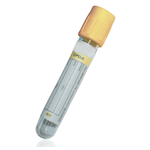Suitable Specimen Types
- Serum
Sample Processing in Laboratory
store at 4CSample Preparation
Centrifuge
Turnaround Time
7 daysSample Stability
NULL
Isocyanate IgE
General Information
Organic diisocyanates are a significant occupational health problem. They are respiratory and skin sensitizers and a major cause of occupational asthma in the UK. The most common are hexamethylene diisocyanate (HDI), toluene diisocyanate (TDI), isopherone diisocyanate (IPDI) and methylene-diphenyl diisocyanate (MDI) in decreasing order of volatility. HDI and IPDI are used for varnishes, coatings and two-pack spray paints used in motor vehicle repair. TDI and MDI are used for flexible and rigid polyurethane foams, floor coverings and adhesives. This wide range of uses means that there are thousands of workers potentially exposed to isocyanates.
In the UK, a management control system is required for workers exposed to isocyanates and for this to be successful workers should not become sensitized. Apart from occupational asthma, airway irritation and asthma-like symptoms such as cough, wheezing and dyspnoea are commonly reported. Other respiratory effects are hypersensitivity pneumonitis, rhinitis and accelerated rate of decline in lung function. Diisocyanates can also cause both irritant and allergic contact dermatitis as well as skin and conjunctival irritation. Health surveillance that detects occupational asthma is recording failure—there needs to be intervention earlier in the exposure-to-disease paradigm. Although there is evidence that detecting respiratory symptoms early and removing workers from exposure improves prognosis, the goal should be to control exposure to prevent any symptoms.
Analytes looked for : Hexamethylene diisocyanate(HDI), Isophorone diisocyanate (IPDI), MDI and Toluene diisocyanate (TDI).
Patient Preparation
None
Reference Range
<200 KU/L
Specifications
- EQA Scheme?: Yes
- EQA Status: UK Neqas for specific IgE
